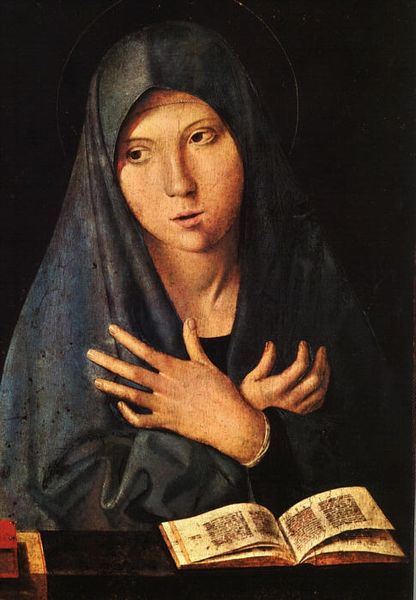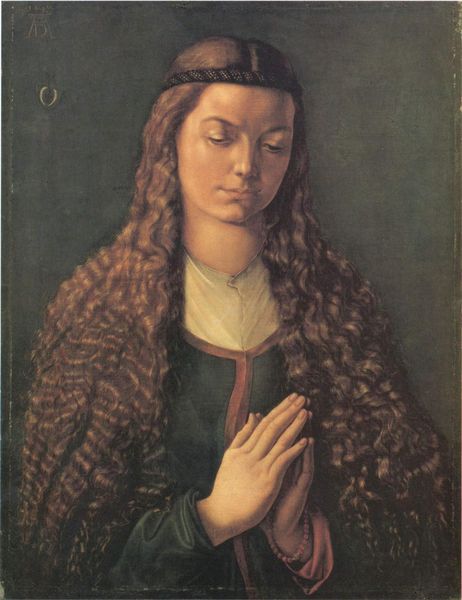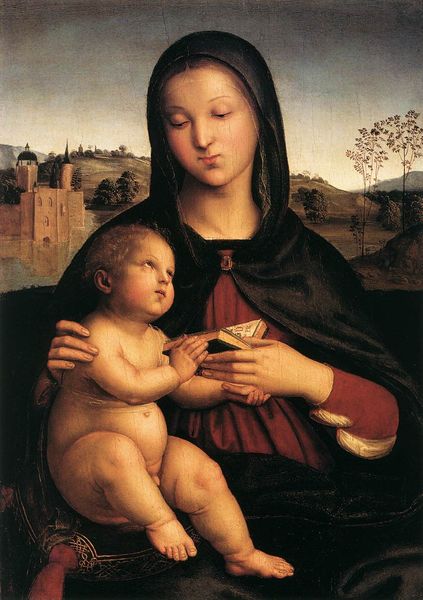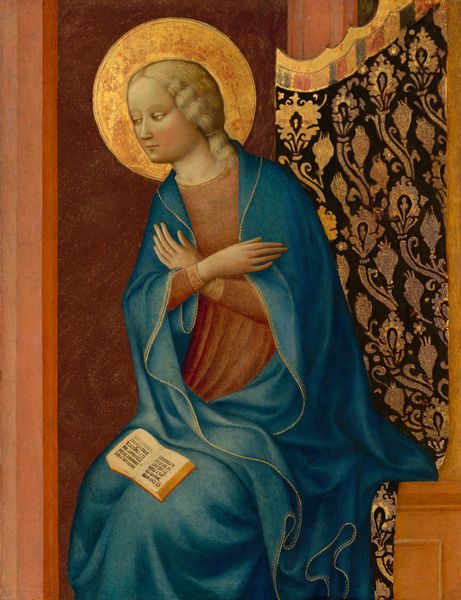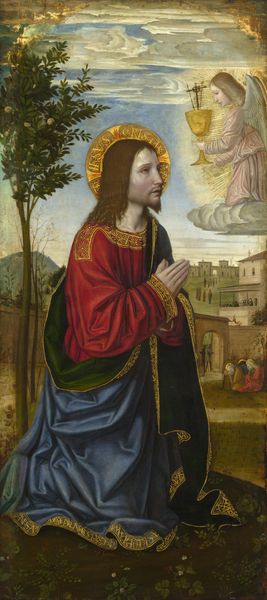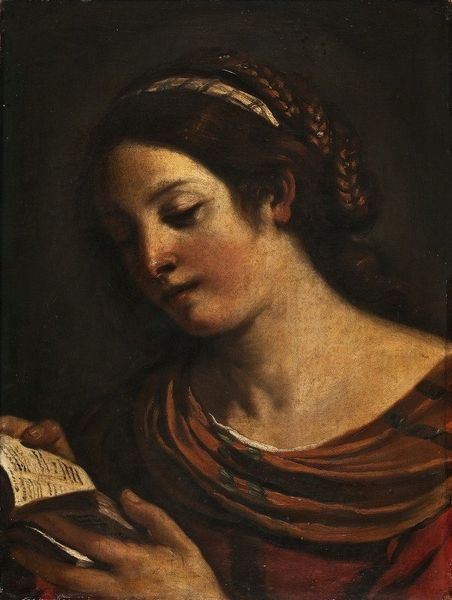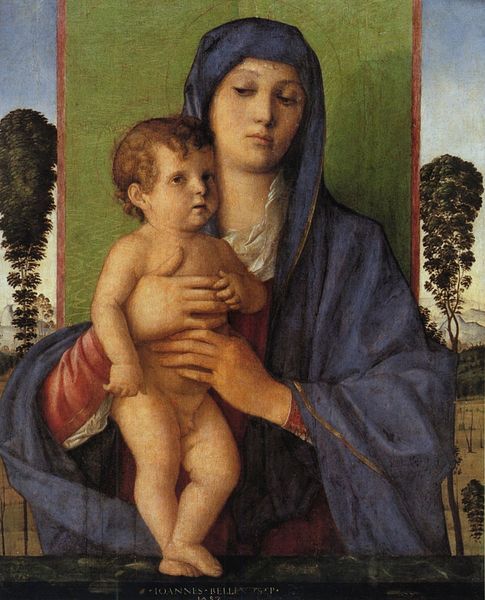
tempera, painting, fresco
#
portrait
#
tempera
#
painting
#
fresco
#
christianity
#
italian-renaissance
Copyright: Public domain
Curator: Here we have a panel taken from Pietro Perugino’s "Polyptych of St. Peter (San Mauro)", executed around 1500 using tempera, potentially alongside fresco techniques. The work is emblematic of the Italian Renaissance. Editor: My initial impression is one of quiet contemplation. There’s an overwhelming stillness emanating from the monk depicted; the composition is serene, the muted palette reinforcing a sense of introspection. Curator: Precisely. Note the deliberate compositional choices: the verticality of the figure contrasts against the subtle horizontality of the architectural background, creating a balanced tension. Perugino’s emphasis on line and form directs our gaze to the subject’s inward focus. The light source is diffused, bathing the scene in an ethereal glow, typical of Renaissance treatments of the divine. Editor: The somber colouration would seem quite deliberate in the context of monastic life, evoking the austerity and solemnity associated with such devotion. I wonder about the preparation of pigments—the deep blacks achieved, presumably from charcoal or potentially burnt plant matter. It’s compelling to consider the readily available resources utilized. Did the labor of acquiring materials shape the meaning constructed? Curator: Certainly, materiality informs the work's reception, although the prevailing perspective emphasizes the formal expression of harmony. Observe the geometric order and the humanistic representation, clearly establishing a classical vocabulary in Renaissance Italy. Editor: While I see the balanced composition you mention, it’s not entirely convincing, to my modern eye at least. I'm intrigued by the tactile nature suggested by the piece; I am drawn into consideration of labor—not simply regarding art creation, but about labor’s place in life during the late-fifteenth century. Who harvested the materials? Curator: A vital point to keep in mind as we depart: examining both material existence and spiritual aspirations coexisting in this artwork broadens its contextual appreciation beyond just pictorial construction. Editor: Absolutely. Through analysis, the object is brought closer—its materiality opens questions related to both artistic expression and humanity in society.
Comments
No comments
Be the first to comment and join the conversation on the ultimate creative platform.

